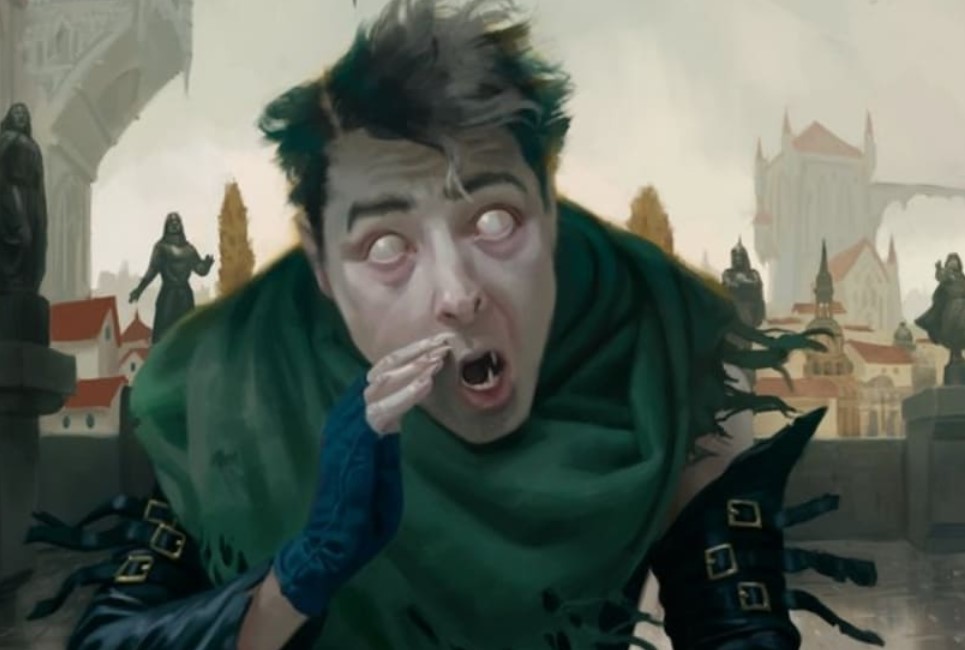In the magical arsenal of Dungeons & Dragons 5th Edition, Dissonant Whispers 5e offers a fascinating blend of psychic damage and forced movement t
In the magical arsenal of Dungeons & Dragons 5th Edition, Dissonant Whispers 5e offers a fascinating blend of psychic damage and forced movement that few other spells at its level can match. This 1st-level enchantment spell is a favorite among bards, warlocks, sorcerers, and wizards who want to sow chaos and fear on the battlefield by literally whispering madness into their foes’ minds.
This article delves deep into Dissonant Whispers, breaking down how it works, why it’s valuable, and how to use it both tactically in combat and creatively in roleplay. If you want to master this spell or integrate it effectively into your game, read on for a comprehensive guide.
What Makes Dissonant Whispers Special?
Unlike straightforward damage spells, Dissonant Whispers combines damage with a powerful crowd control effect. It targets the mind directly, delivering a psychic assault that leaves the target reeling and fleeing — sometimes to the party’s advantage.
- Damage Type: Psychic (rarely resisted)
- Effect: Forced movement using the target’s reaction
- Range: 60 feet, allowing you to strike from a distance
- Instantaneous: No ongoing concentration needed
This unique combination gives spellcasters a tactical edge in a variety of combat scenarios.
Spell Overview
- Level: 1st
- School: Enchantment
- Casting Time: 1 action
- Range: 60 feet
- Components: Verbal only (no material or somatic)
- Duration: Instantaneous
Spell Text Summary
You whisper a discordant melody only one creature within range can hear. The target must succeed on a Wisdom saving throw or take 3d6 psychic damage and immediately use its reaction to move as far away from you as possible. The forced movement provokes opportunity attacks. On a successful save, the target takes half damage and does not move.
When cast with a higher-level spell slot, damage increases by 1d6 per slot level above 1st.
Tactical Breakdown
1. Reliable Psychic Damage
Psychic damage is special because very few creatures resist or are immune to it, making Dissonant Whispers a consistent source of damage when other spells might be less effective. Against creatures like aberrations, fiends, or even certain undead, psychic damage can be devastating.
2. Forced Movement on Reaction
The spell’s signature feature forces the target to flee immediately if it fails its save, using its reaction. This forced retreat can cause disruption in enemy lines and provoke opportunity attacks from your allies. This makes Dissonant Whispers a prime spell for battlefield control, especially when combined with melee fighters.

3. Synergy with Party Composition
- Frontline fighters or paladins with high melee damage benefit from the forced retreat triggering opportunity attacks.
- Rogues can capitalize on enemies moving away to position sneak attacks.
- Spellcasters gain breathing room as enemies are pushed out of melee range.
Ideal Targets for Dissonant Whispers
- Single powerful melee threats: Make them run from the party to prevent them from dealing heavy damage.
- Low Wisdom save enemies: Such as goblins, orcs, or certain undead who tend to have weaker mental resilience.
- Creatures clustered in tight formations: Force one to flee and break the enemy’s cohesion.
- Opponents with few or no reactions: If the target has already used their reaction, they won’t move, but will still take damage.
Character Classes That Excel with Dissonant Whispers
Bard
Bards are the quintessential users of Dissonant Whispers, thematically fitting the spell’s musical and psychic nature. The College of Lore, with its additional magical secrets, can gain further spell options that complement the crowd control and support role. Using Bardic Inspiration in tandem with Dissonant Whispers to debilitate foes makes for a dynamic battlefield presence.
Warlock
Warlocks benefit from the spell’s low-level casting and its thematic link to mind control and terror. With Pact Magic allowing for frequent spell slot recovery on short rests, warlocks can repeatedly harass enemies with this spell. Eldritch Invocations such as Agonizing Blast can supplement damage while Dissonant Whispers controls enemy movement.
Sorcerer
Metamagic options open up creative uses for Dissonant Whispers. Twinned Spell can affect two targets simultaneously, doubling battlefield disruption. Quickened Spell allows casting Dissonant Whispers as a bonus action, freeing your main action for other spells or attacks.
Wizard
While not a classic wizard spell, Dissonant Whispers fits well into Enchantment and Illusion schools for a wizard focusing on control. Wizards can prepare it situationally for utility and battlefield manipulation.
Roleplaying Dissonant Whispers
The mental torment caused by Dissonant Whispers can be flavored in many ways beyond just “whispers”:
- A bard might sing a haunting, discordant tune that only the target’s mind can hear.
- A warlock could channel a dark, eldritch voice from the Far Realm.
- A sorcerer might emit strange, unsettling murmurs or psychic echoes that disturb their foes.
This versatility makes it a rich spell for storytelling and atmosphere in roleplay sessions, not just combat.
Spell Limitations and Counters
- Targets with high Wisdom saves often shrug off the spell.
- Creatures immune or resistant to psychic damage are unaffected or less affected.
- If the target has already used its reaction, it won’t move but still takes damage.
- The spell only targets one creature at a time (unless metamagic applies).
- No effect on unconscious or deaf creatures since the whisper must be heard.
Creative Uses Beyond Combat
- Interrogation: A whispered madness might coerce an NPC to reveal secrets or comply.
- Fear Tactics: Cause enemies to flee, creating openings for diplomacy or ambush.
- Puzzle or Trap: Use the spell to cause a guard to move away and trigger a trap.
Sample Combat Scenario
Your party is ambushed by a brutish ogre charging your fragile cleric. You, playing a bard, cast Dissonant Whispers on the ogre. The ogre fails its save, takes psychic damage, and immediately flees your position, provoking a devastating opportunity attack from the fighter next to you. The ogre’s charge is broken, your cleric has time to heal, and your party gains the upper hand.
Frequently Asked Questions (FAQs)
Q1: Can a creature forced to move by Dissonant Whispers move through another creature’s space?
No. Movement rules in D&D 5e prohibit moving through spaces occupied by hostile creatures unless the creature is Tiny or you have special abilities.
Q2: Does Dissonant Whispers affect creatures that cannot hear?
No. Since the spell involves whispering a melody only the target can hear, deaf or creatures without hearing cannot be affected.
Q3: Can Dissonant Whispers force the target to move into dangerous terrain or hazards?
Yes, the spell forces the target to move as far as possible directly away, even if that means entering hazardous terrain, unless the creature is unwilling and has special abilities that prevent forced movement into danger.
Q4: Can Dissonant Whispers be combined with spells like Healing Word or Shield?
Yes. Since Dissonant Whispers requires only a verbal component and is cast as an action, you can combine it with other spells if you have features like Quickened Spell (sorcerers) or if the other spell is cast on a different turn.
Q5: What happens if the target has no available movement?
If the target cannot move (petrified, restrained, or grappled with no escape), it still takes the psychic damage but cannot move.
Q6: Is the damage from Dissonant Whispers affected by spell resistance or magical immunity?
Damage can be reduced or negated depending on the target’s resistances and immunities. For example, creatures immune to psychic damage take no damage, but most creatures are vulnerable.
Q7: Can Dissonant Whispers be used outside combat?
Yes. Its psychic effect can serve for intimidation, distraction, or influencing NPC behavior in roleplaying scenarios.
Conclusion
Dissonant Whispers is a highly effective and flavorful 1st-level spell that blends damage and tactical battlefield control through forced movement and psychic assault. Its versatility makes it a staple for bards and a valuable option for other spellcasting classes who want to manipulate enemy positioning and disrupt combat flow.
With the right tactics and creativity, Dissonant Whispers can become a signature spell that defines your character’s style and strategy. Its roleplaying potential also enriches the narrative, making encounters more immersive and memorable.
Whether you’re leading the charge as a charismatic bard, wielding eldritch power as a warlock, or casting with precision as a sorcerer or wizard, Dissonant Whispers is a spell worth mastering in your D&D 5e journey.
More Info: primereport




COMMENTS